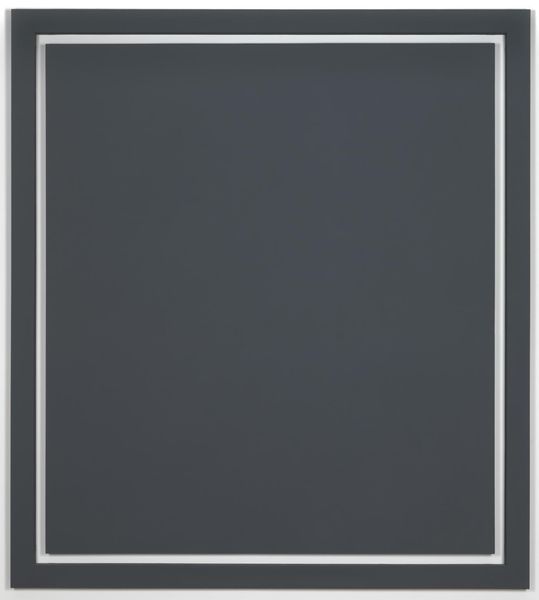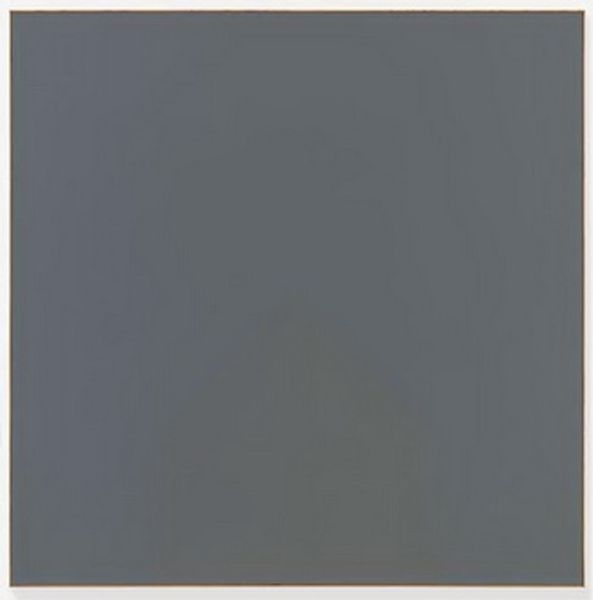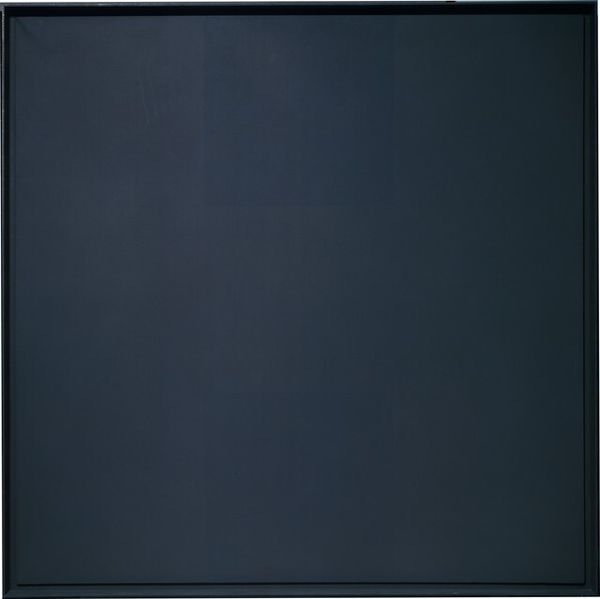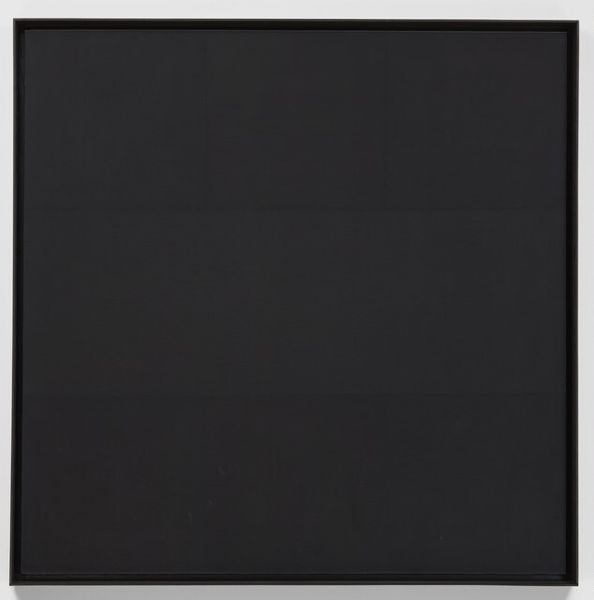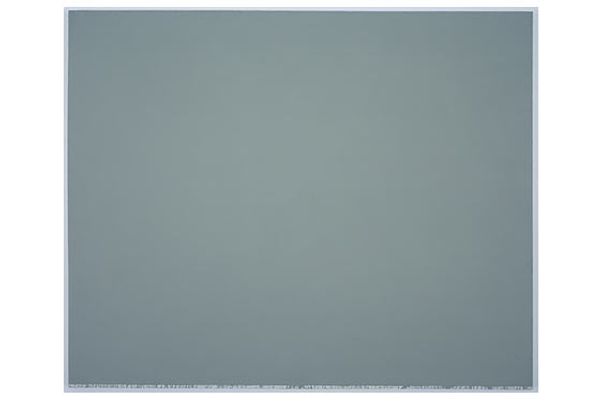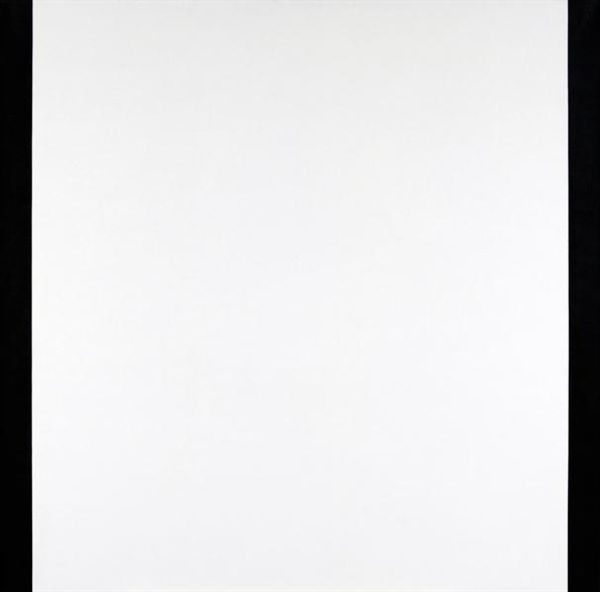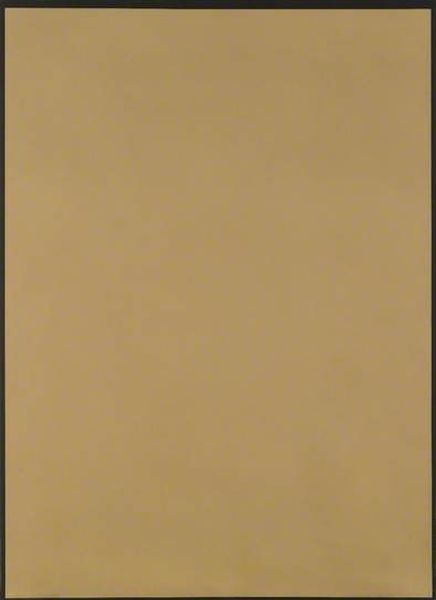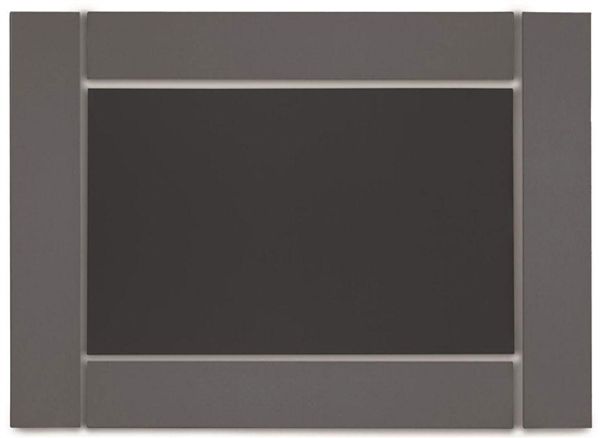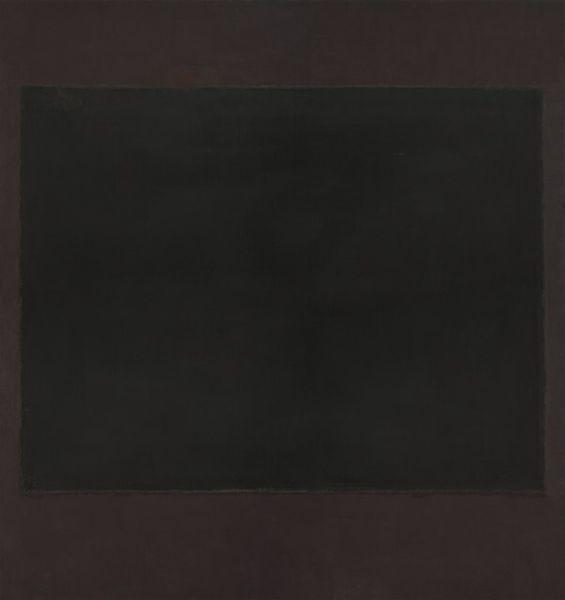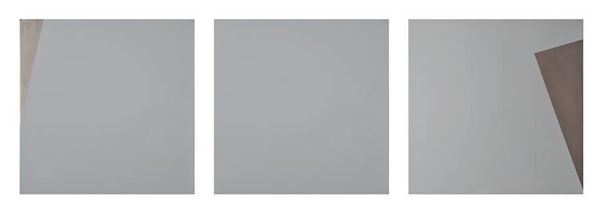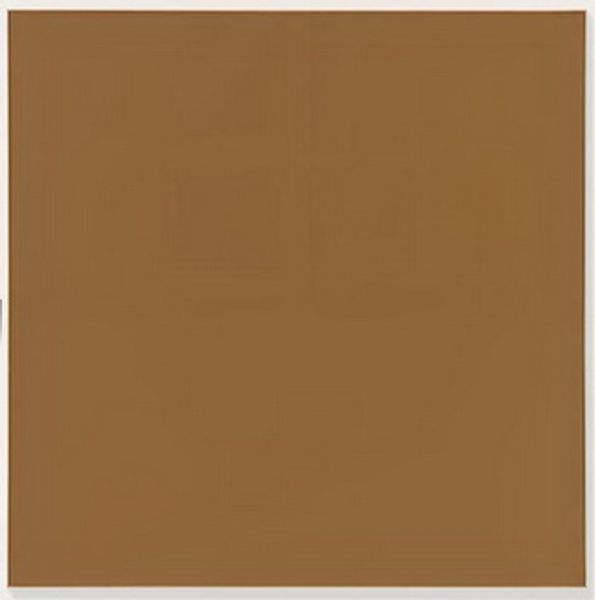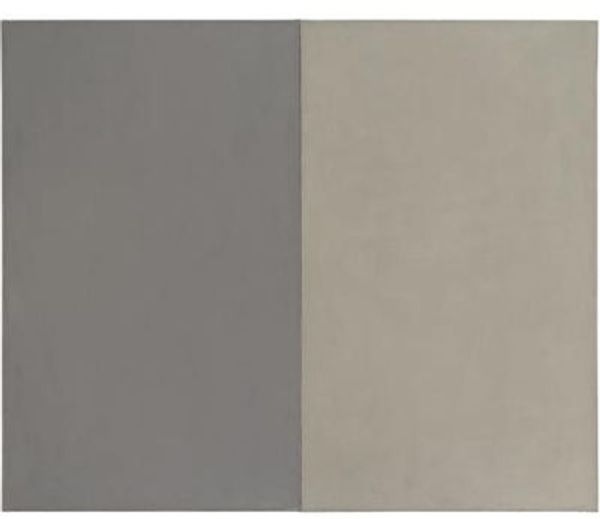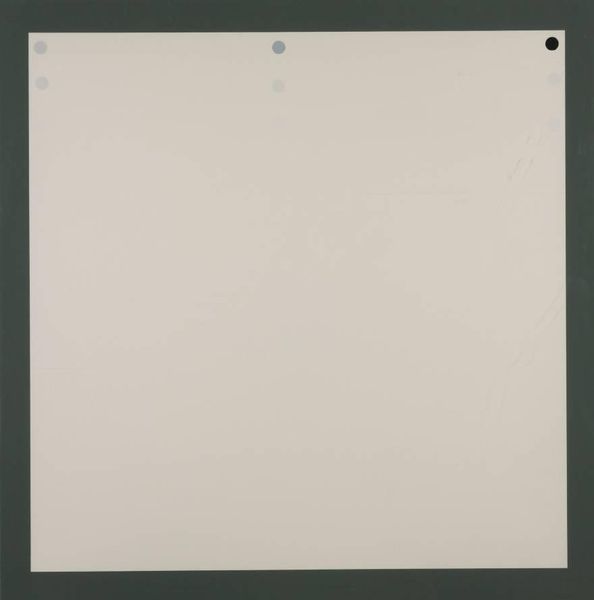
Copyright: Alan Charlton,Fair Use
Curator: Here we have Alan Charlton's "Channel Painting No. 6," created in 1975. Editor: My immediate thought? Restrained. The monochrome grey field, bordered by those clean white lines—it feels almost like a visual meditation. Curator: Charlton was really invested in exploring the very properties of painting. This is acrylic on wood, and he carefully chose these materials for their specific qualities. The lack of illusion or representation encourages us to consider painting as pure object. Editor: Absolutely, but this pursuit of objecthood also engages with a wider political discourse. Consider the context of the 1970s. Minimal art became a means of stripping away bourgeois values associated with art as a commodity, instead presenting a kind of...visual refusal. Curator: That makes sense. Charlton embraced the grid to counteract any notions of gestural expression, effectively removing the artist's "hand" to foreground the artwork as fabricated object, one almost anyone could theoretically create. Editor: Precisely! The monochrome palette also becomes potent in this rejection of decoration. But, there’s more: gender and class. Who gets to decide what's aesthetically pleasing? Minimalism questioned those very power dynamics in the art world. Curator: The work’s materiality itself is significant. He didn't try to hide the imperfections in the wood, making the process transparent, which, paradoxically, calls attention to the subtle nuances of that specific gray and how it sits on the panel. Editor: It challenges viewers to really slow down and question their expectations. Instead of visual pleasure as conventionally defined, we're invited to engage critically. What labour and whose taste determine artistic value? Curator: Indeed. It certainly pushes back against conventional approaches to art appreciation by revealing the work’s basic physical properties as a mass-produced product with material properties we might overlook. Editor: Thinking about these questions expands the conversation and allows for critical reflection, acknowledging the inherent politics within something that initially seems so, well, neutral. Curator: A powerful lesson about how art engages with and challenges the culture it exists within. Editor: It has made me rethink minimalism, and look deeper into its history.
Comments
No comments
Be the first to comment and join the conversation on the ultimate creative platform.
